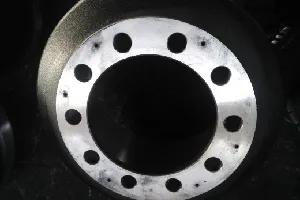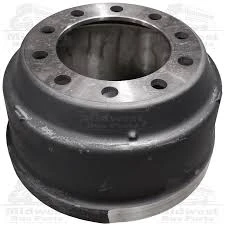Mar . 05, 2025 01:42
Torna à a lista
hard brake pedal drum brakes
Experiencing a hard brake pedal, especially with drum brakes, is a situation no driver wants to face, yet it is more common than one might think. In my two decades of automotive expertise, I've encountered countless cases where drivers were startled by the unyielding rigidity of their brake pedals. Understanding the intricacies of drum brakes and what contributes to a hard pedal is crucial, not just for mechanics but for any vehicle owner who values safety.
Material fatigue and aging components, such as the brake springs, can be deceptive culprits leading to deficient braking performance. Springs that have lost their tension over time can result in insufficient retraction of the brake shoes after they're engaged. This constant pressure kept on the shoes against the drum not only accelerates wear and tear but also contributes to a stiffer brake pedal. Swapping out old brake springs for new ones restores the intended responsiveness of your brake system. When considering your overall braking system, fluid dynamics cannot be overlooked. A hard brake pedal might also indicate issues within the brake fluid lines. Entrapped air, old fluid, or low fluid levels can simulate a hard pedal response due to inadequate hydraulic pressure. Regular bleeding of your brake lines and replenishing brake fluid not only ensures a soft, responsive pedal but also keeps the internal components of the brake system in excellent working condition. In situations where a vehicle is equipped with an anti-lock braking system (ABS), pedal feel can be affected by malfunctions within the ABS module. Although less common, any suspicion of electronic malfunctions requires immediate professional diagnosis. The ABS system is an added layer of safety that, if not operating correctly, can adversely affect the predictability and effectiveness of the entire braking system. In my experience training with mechanics across various automakers and working on numerous brake systems, understanding the balance between preventative measures and timely component replacement is paramount. A functionally intact braking system is a cornerstone of automotive safety, significantly influenced by the state of your drum brakes. Ensuring that every part, from the brake shoes to the hydraulic lines, is regularly inspected and maintained will forge a road ahead that's both safe and smooth for every driver.


Material fatigue and aging components, such as the brake springs, can be deceptive culprits leading to deficient braking performance. Springs that have lost their tension over time can result in insufficient retraction of the brake shoes after they're engaged. This constant pressure kept on the shoes against the drum not only accelerates wear and tear but also contributes to a stiffer brake pedal. Swapping out old brake springs for new ones restores the intended responsiveness of your brake system. When considering your overall braking system, fluid dynamics cannot be overlooked. A hard brake pedal might also indicate issues within the brake fluid lines. Entrapped air, old fluid, or low fluid levels can simulate a hard pedal response due to inadequate hydraulic pressure. Regular bleeding of your brake lines and replenishing brake fluid not only ensures a soft, responsive pedal but also keeps the internal components of the brake system in excellent working condition. In situations where a vehicle is equipped with an anti-lock braking system (ABS), pedal feel can be affected by malfunctions within the ABS module. Although less common, any suspicion of electronic malfunctions requires immediate professional diagnosis. The ABS system is an added layer of safety that, if not operating correctly, can adversely affect the predictability and effectiveness of the entire braking system. In my experience training with mechanics across various automakers and working on numerous brake systems, understanding the balance between preventative measures and timely component replacement is paramount. A functionally intact braking system is a cornerstone of automotive safety, significantly influenced by the state of your drum brakes. Ensuring that every part, from the brake shoes to the hydraulic lines, is regularly inspected and maintained will forge a road ahead that's both safe and smooth for every driver.
Ultime nutizie
-
The Power and Reliability of Brake DrumsNewsAug.27,2025
-
The High-Quality Truck Brake DrumsNewsAug.27,2025
-
Quality Brake Drums for Reliable PerformanceNewsAug.27,2025
-
Get the Quality Semi Trailer Brake Drums for Your FleetNewsAug.27,2025
-
Everything You Need to Know About Brake DrumsNewsAug.27,2025
-
Enhance Your Vehicle's Performance with Reliable Brake DrumsNewsAug.27,2025
-
Truck Drum Brake Spring Replacement ProcedureNewsAug.22,2025


